The modern Porsche 911 isn’t just an extraordinary car, singular, but an extraordinary range of cars.
You can have a regular rear-drive, road-focused 911 with a roof, or a four-wheel-drive alternative, or one without a roof, or one with half a roof, plus versions that are track-focused, or dominated by straight-line acceleration, rough-road ready… In all, there are 26 different 911s on sale today.
Things were rather different when Porsche first set out to put the family name on a sports car, in 1948, when the son of Porsche founder Ferdinand, also called Ferdinand but known as Ferry, designed a two-seat mid-engined roadster at a sawmill in Gmünd, Austria.
The mid-engined 356 prototype had a complex spaceframe chassis. Porsche still owns it. But when it came to turning that into a production vehicle, the 356/2, Ferry adopted a layout more familiar to Porsche, because his old man had designed the Volkswagen Type 1, or Beetle: the production 356 had a Volkswagen 1100cc engine, gearbox and suspension, all in their original locations, with a monocoque chassis.
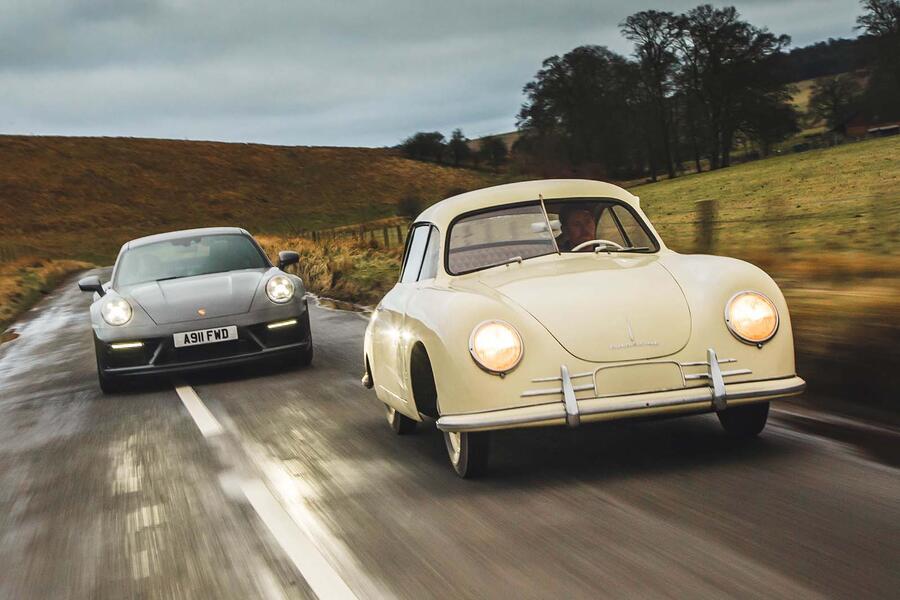
This was simpler and cheaper to make but also meant it was more practical, with notable space behind the front bench seat. In a country strapped for money and resources, the Austrian government agreed Porsche could make some 356s so long as it exported them.
Between 1948 and 1951, then, Porsche, with the assistance of some suppliers because the factory was so small, went on to make 52 examples of the 356/2 – 44 coupés and eight roadsters – before the company returned to Stuttgart. In doing so, the template and lineage for the greatest sports car of all was born.
Quick links: Introducing the Porsche 911 GTS - Introducing the Porsche 356/2 - Interior - Driving dynamics - Verdict - Specifications
Introducing the Porsche 911 GTS
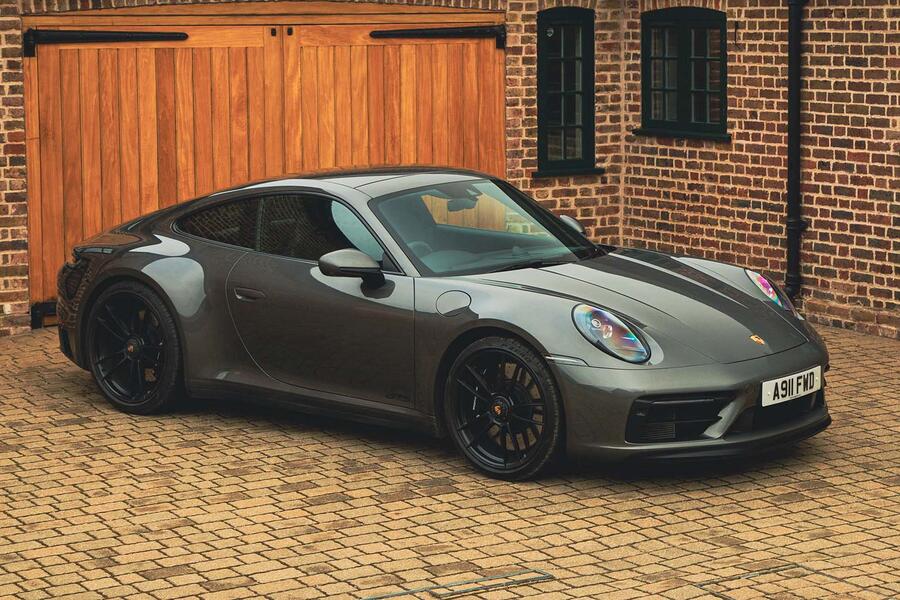
Today, we have represented the template with a Carrera 4 GTS, an upper-middling 911 with a 3.0-litre turbocharged flat-six engine making 474bhp. It will go from rest to 62mph in 3.3sec and do 192mph flat out, but ultimately it’s still considered a road-focused 911.
Modern 911s are by no means all the same, but I love some of their shared traits. There are, for instance, ones as diverse as a Dakar or a GT3 RS, which would make for a very broadly able two-car garage. This GTS differs from both of those but a thread runs through every modern 911.
There’s the relatively lightly loaded front end, which given the absence of an engine up there means the nose can be low and short, and visibility good. The ride is firm, arguably too fidgety on poorer UK roads, in this GTS and Porsche allows more road noise into the cabin than rivals like BMW or Mercedes do.
But it’s totally bearable and it gives back so much reward at any speed. The steering is particularly lovely, partly because with a lighter nose it needs less assistance than front-engined alternatives, which are all woollier and less responsive. The GTS is a £116,690 sports car that offers rare levels of reward, engagement and rigid body control.
Introducing the Porsche 356/2

Stepping from it and into a 356/2, I’m wondering what, if anything, will feel familiar. This is the 32nd 356 made, part assembled by Tatra in Salzburg, Austria, and then imported to Sweden along with 14 others by Swedish truck maker and, by then, also Volkswagen importer Scania-Vabis.
The car’s history is well documented. It was completed on 12 June 1950, was approved in Gothenburg, Sweden, after its arrival on 9 November 1950 and was registered by Automobilfirma Per Nyqvist AB nine days later.
In all, it has had 16 owners, including its latest, DK Engineering in Chorleywood, which revived its mechanicals and has lent it to us for the day prior to finding a buyer for it. It had a fresh coat of paint in the 1980s but the rest, including the interior, is original.
![]()
It is dainty and feels delicate, with panels that seem as wispy as a light aircraft’s. It’s no lower than a modern 911 – both are 1.3m tall – but it looks it. The body overhangs the skinny wheels by a large margin but it looks swoopy and space-aged – like somebody’s vision of the future.
When The Autocar saw it at the 1949 Geneva motor show, we said this “elegant coupé” from “the designer of the pre-war Auto Union Grand Prix cars” contained “great technical interest”.
We acknowledged the Volkswagen mechanicals, and if you have been around an old Beetle, there is no mistaking them. Open the dinky rear hatch to reveal the engine and there it is, the Volkswagen flat four, most likely repurposed from an existing car – a Type 1 or Kübelwagen, I wonder; more likely the latter? – but wearing twin carburettors rather than a single one, and fettled to make 40bhp instead of the original’s 25bhp. Still comfortably less than 10% of today’s GTS.
Interior

The interior is delightful. Fall ungracefully onto the soft bench seat, quite cramped behind the big steering wheel, and it takes a bigger slam than perhaps you would first dare to swing the door shut.
There is only one instrument, the central speedometer, which sits where a rev counter would today. To its right, a tidy rubber grommet covers the oil pressure gauge hole while DK is sourcing the original’s repair. A smattering of switches in the middle finishes it off.
The rest of the interior is exposed cream paint, time-worn leather, attractive tweedy carpet and three pedals poking from the footwell, floor-mounted. Behind the seats, there’s a charming-looking carpeted and quilted storage space.

A twist of the diddy key and a prod of throttle brings the VW engine gradually to life. It idles quietly. A spindly gear-lever topped by a plastic ball the size of a skateboard wheel emerges just in front of the front bench, which is indented in the middle to give it the space it needs to move.
There’s no plane that the gear-lever reverts to: it just wafts between gates. People say that VW Beetle gearshift quality is poor, including The Autocar in a 1951 test drive of a later, Stuttgart-built 356, whose gearbox was “not by any means quiet, nor is it a very easy one to change gear”.
This car has no synchromesh on first and second so gears want careful selection and double de-clutching, but otherwise it seems fine to me – certainly more precise than on my 1973 Beetle. The throttle weighting is positive, pedal spacing broad and brake pedal long but eventually effective.
Driving dynamics

Gratifyingly, I don’t stall it, or misselect a gear, and the engine, which makes its peak power at only 4000rpm, has a broad spread of what could loosely be termed as power. As in, it doesn’t make a lot of it, but it’s consistent around the rev band. Fourth gear is actually quite long, so the engine really settles at a cruise.
The top speed was said to be 85mph, though heaven knows it would take a long time to get there and, with its slow worm-geared steering, you would be a brave soul to try it.
Certainly, our bit of Berkshire wouldn’t have been big enough for the task and, for reasons of its value which I’ll come onto in a moment, nor did I have a crack at establishing whether this 356 retained the traits that “a combination of a rear engine and swing axle on a short-wheelbase car” give: “pronounced oversteer”.
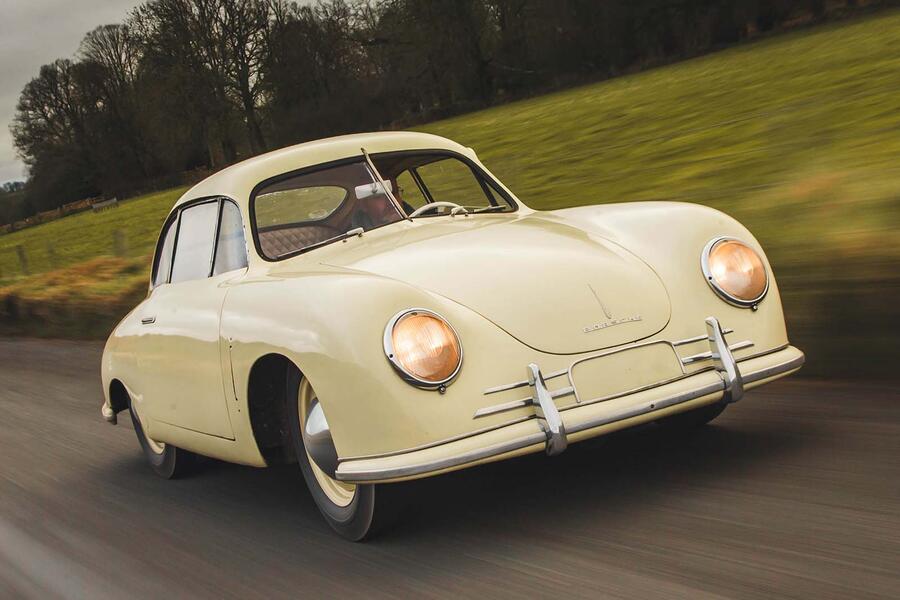
But I can tell you it rides well, deftly and softly, because on generous tyres and weighing around 700kg (it’s hard to discern the precise figure from historical records), it doesn’t need to be overtly stiff. Besides, nobody thought to make cars hard-riding at the time.
The steering, then – given some flex in the chassis, its slow unassisted gearing and the vagaries of time – takes a moment to pick up weight and start deflecting the car from straight ahead. It feels a bit nervous – or at least I do – as a car with a short wheelbase and a track so inward of the body might well do. But even in top gear, the 356 gathers speed onwards in a way I didn’t expect from just 40bhp.
The drag coefficient was later measured below 0.30, so it is slippery and has a small frontal area. It’s no wonder that at Le Mans in 1951, a modified Gmünd-built coupé was able to hit 100mph and finished first in the 751-1100cc class, despite putting out only 46bhp.
And, yes, there are some things that still feel like a 911 does today, such as the view, through a narrow screen, across a low front end, with pronounced wings; the slight bob of the front end, which is so differently loaded from the rear; and the fact that the noise comes from so far behind, to the extent that it’s almost inaudible at cruising speed.
Verdict
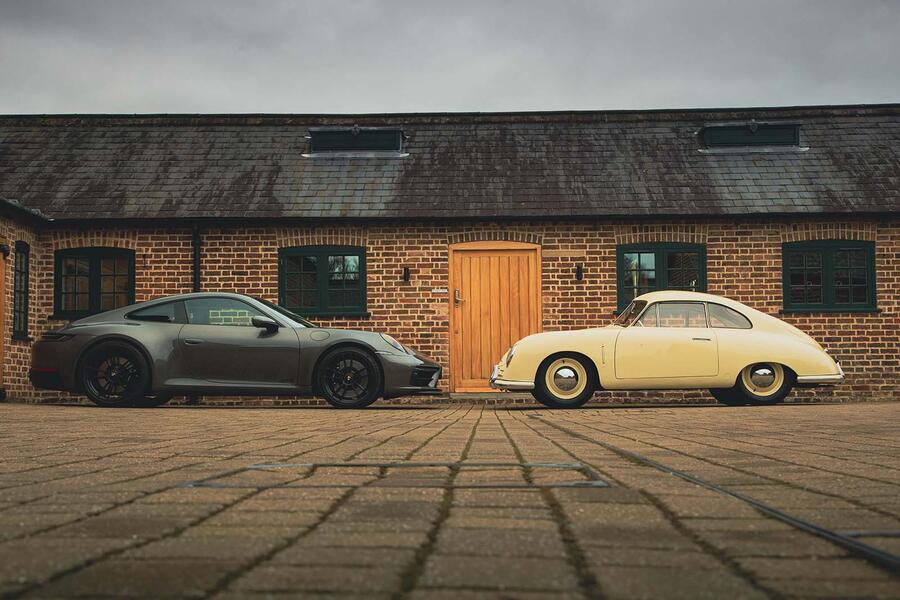
The 356/2 feels incredibly special. Never, though, does it feel exotic, nor perhaps does it look it. “Did you build it yourself,” asks a walker of its custodian when passing it in a car park, before being pleasantly surprised to learn that, no, this is the oldest Porsche in the UK.
There is, I suppose, no getting away from its humdrum mechanicals. This isn’t a race-winning V12 Ferrari. Its estimated value of around £2.7 million is very much a subject of its rarity, its status and its originality.
“It’s one of the most original 356s,” says DK Engineering’s James Cottingham, so much so that “one owner had it as a reference for his other cars”. It’s the sort of car that will, perhaps inevitably as a result of the value, go into an existing Porsche collection. And may have already done so by the time you read this.
“Like all great cars, it’s a rarefied atmosphere,” says Cottingham. “There probably aren’t tens of buyers but the term ‘bookend’ comes from somewhere.”
Ultimately, that’s what this 356 represents: it’s a lovely, usable example of an original car, the one that started the greatest sports car lineage of all. I could love it for the way it looks and the way it feels. But that’s nothing compared with what it represents.
Specifications
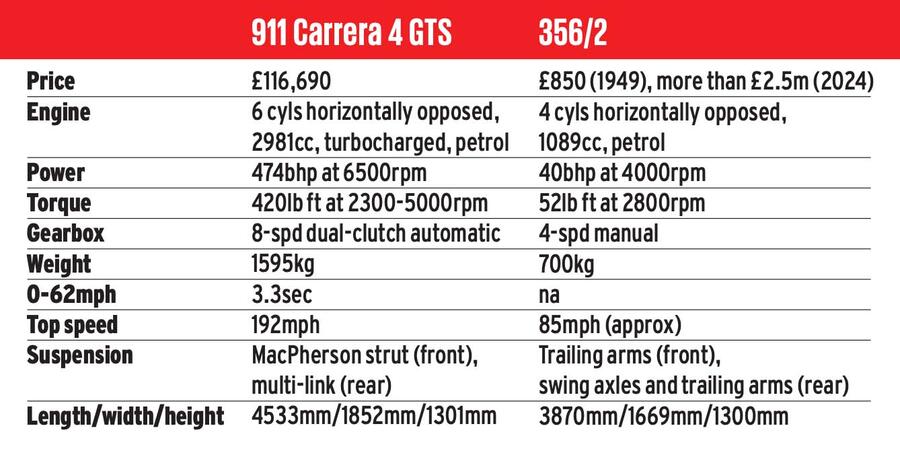

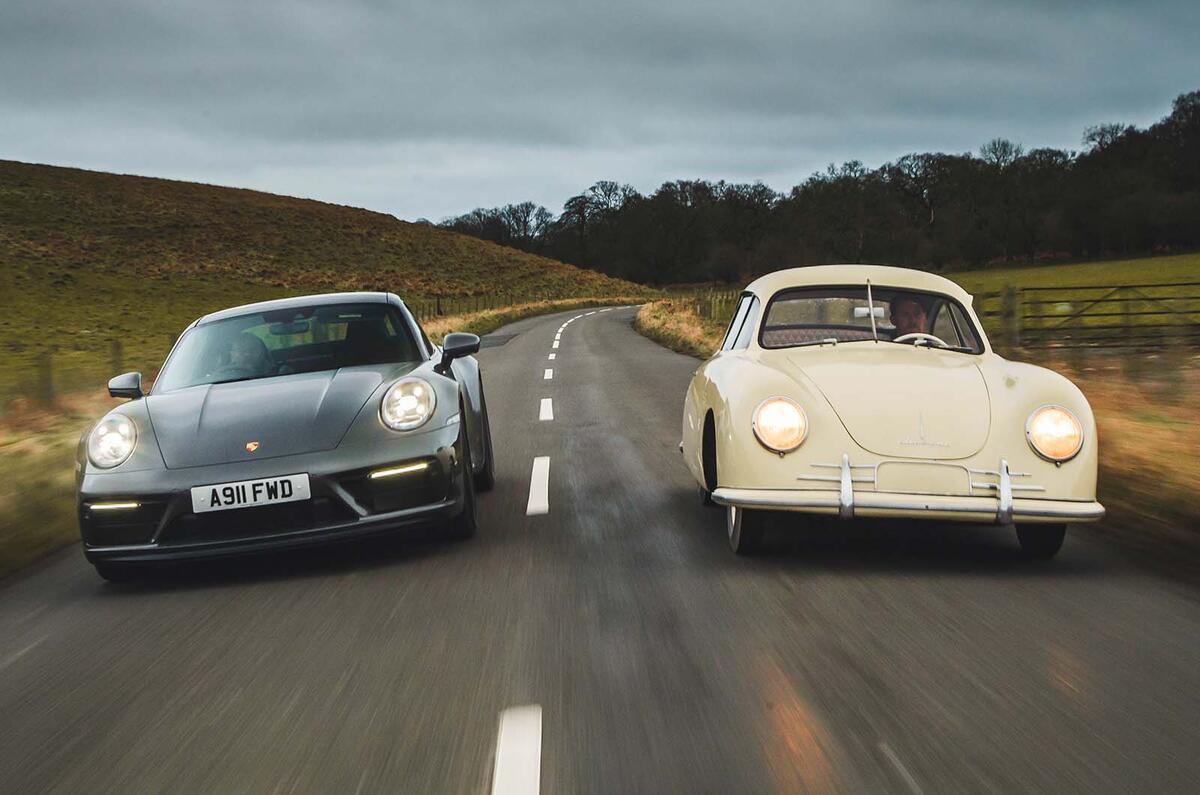
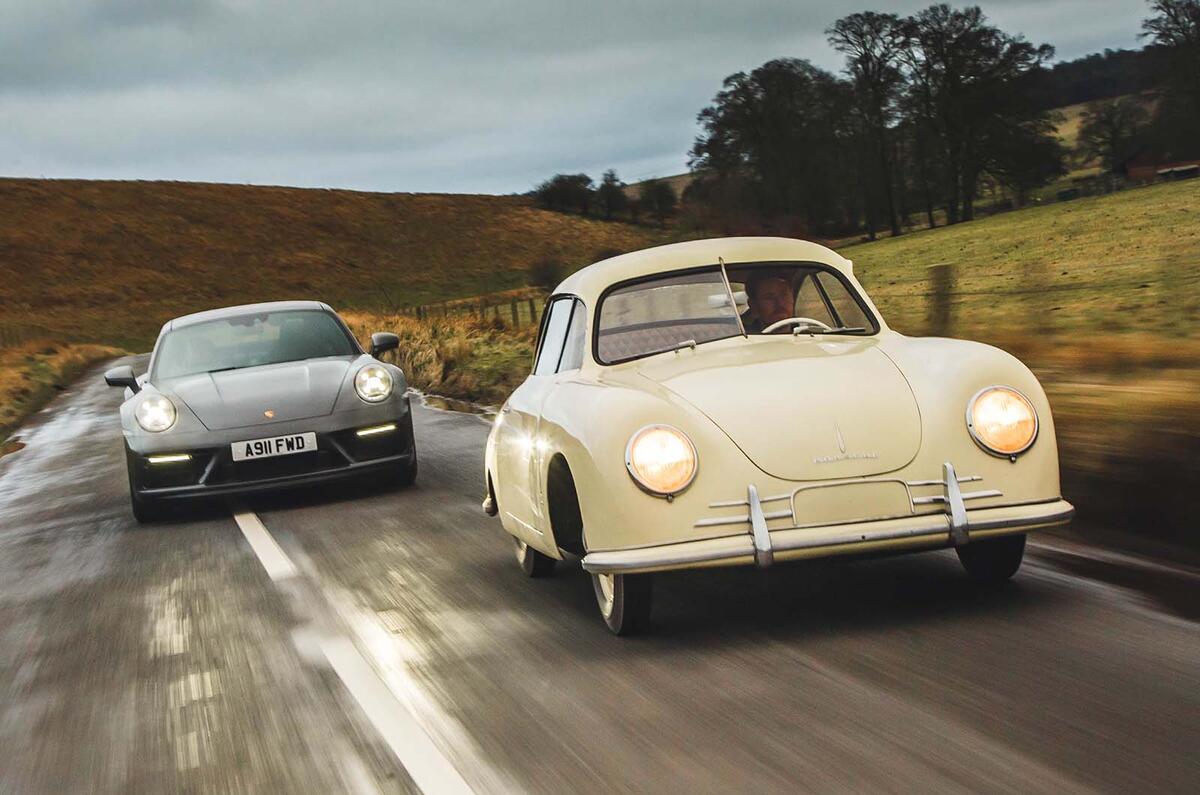
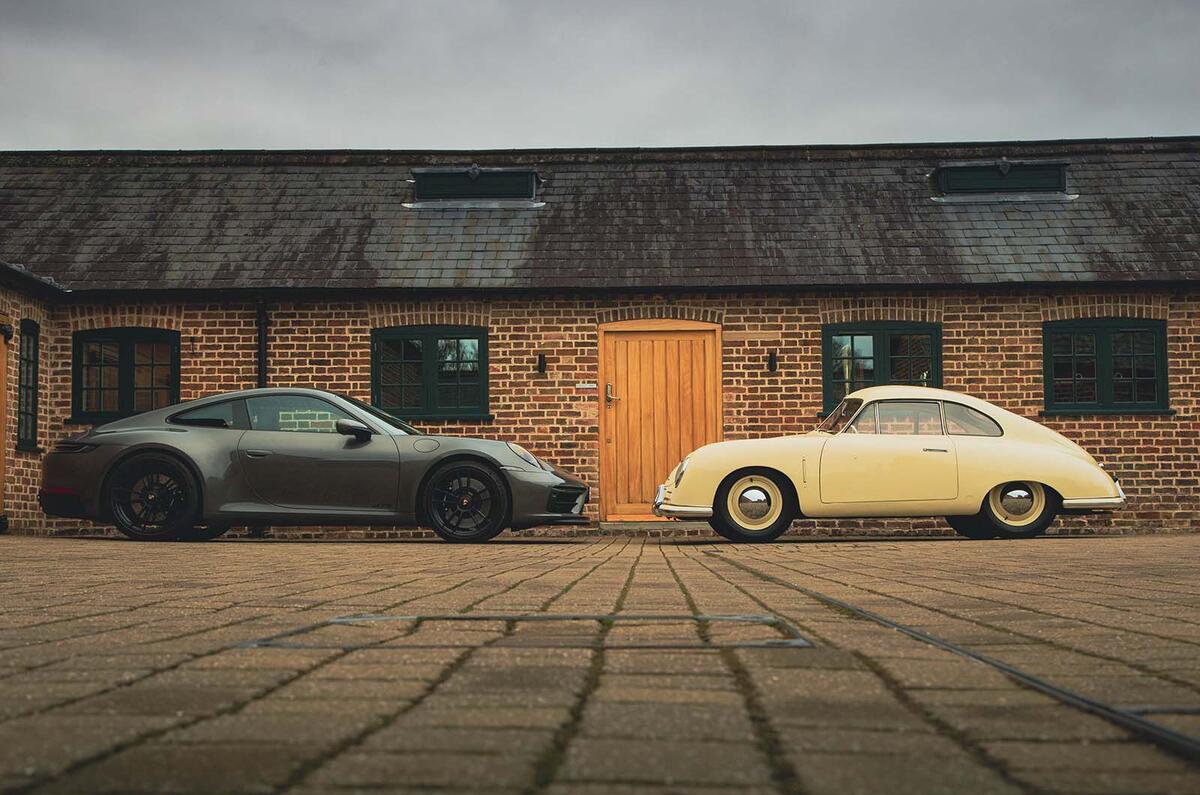
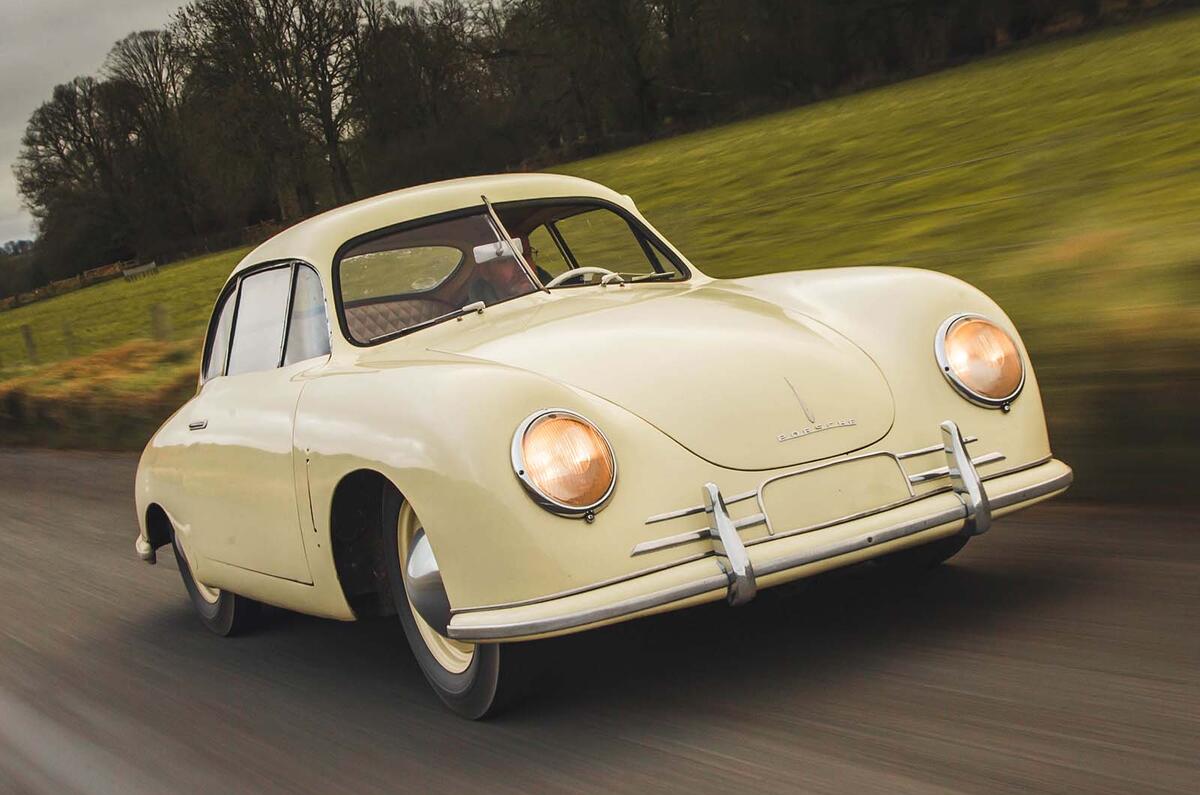
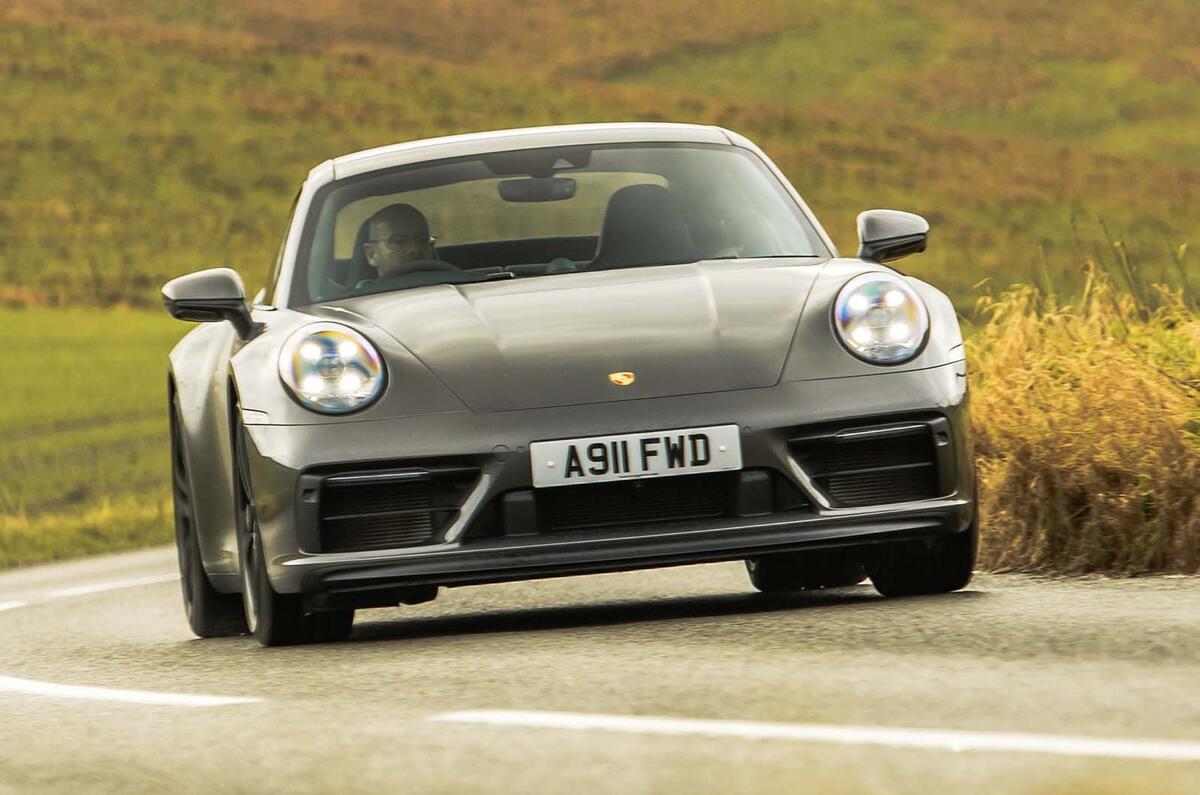
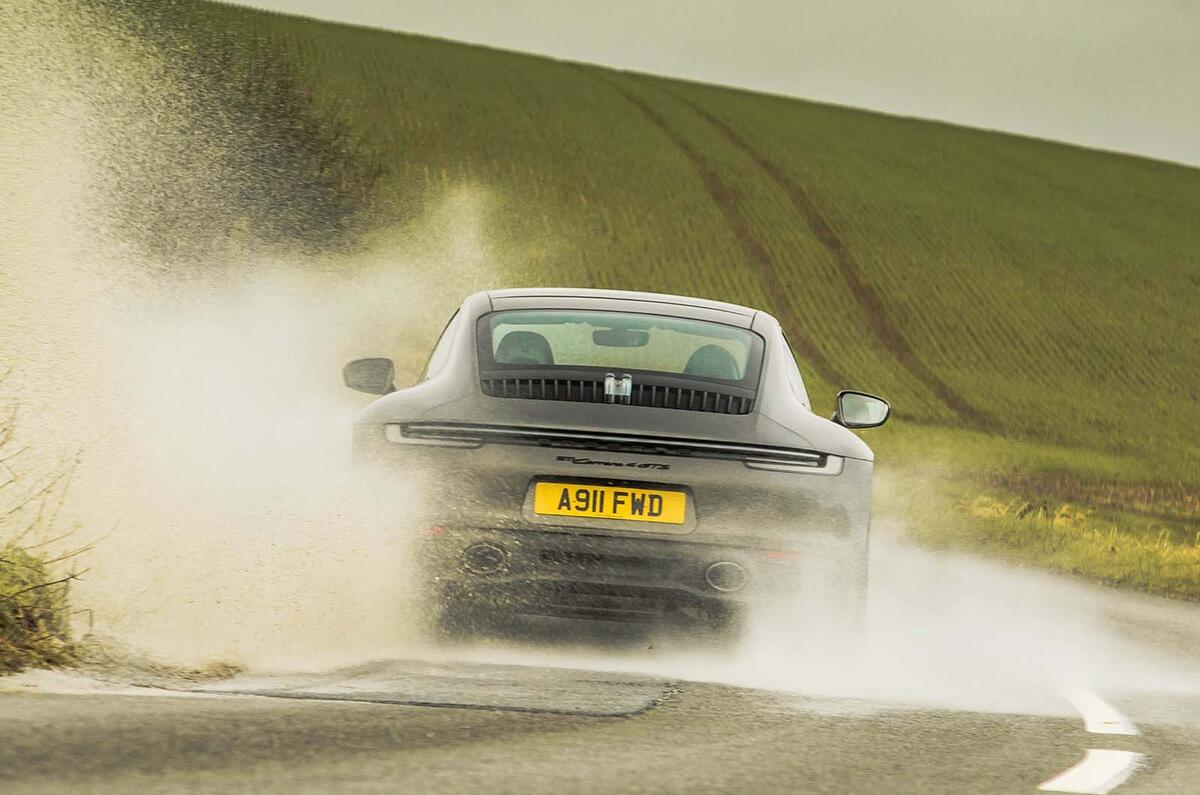
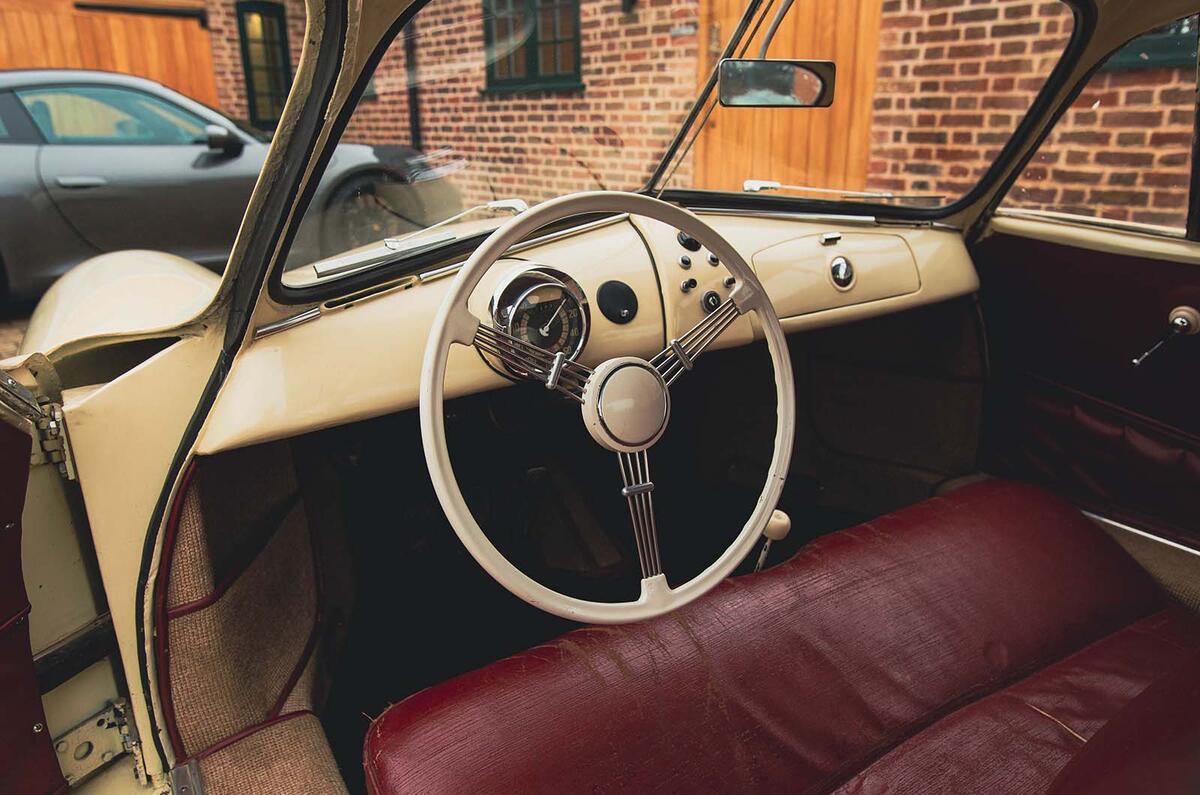
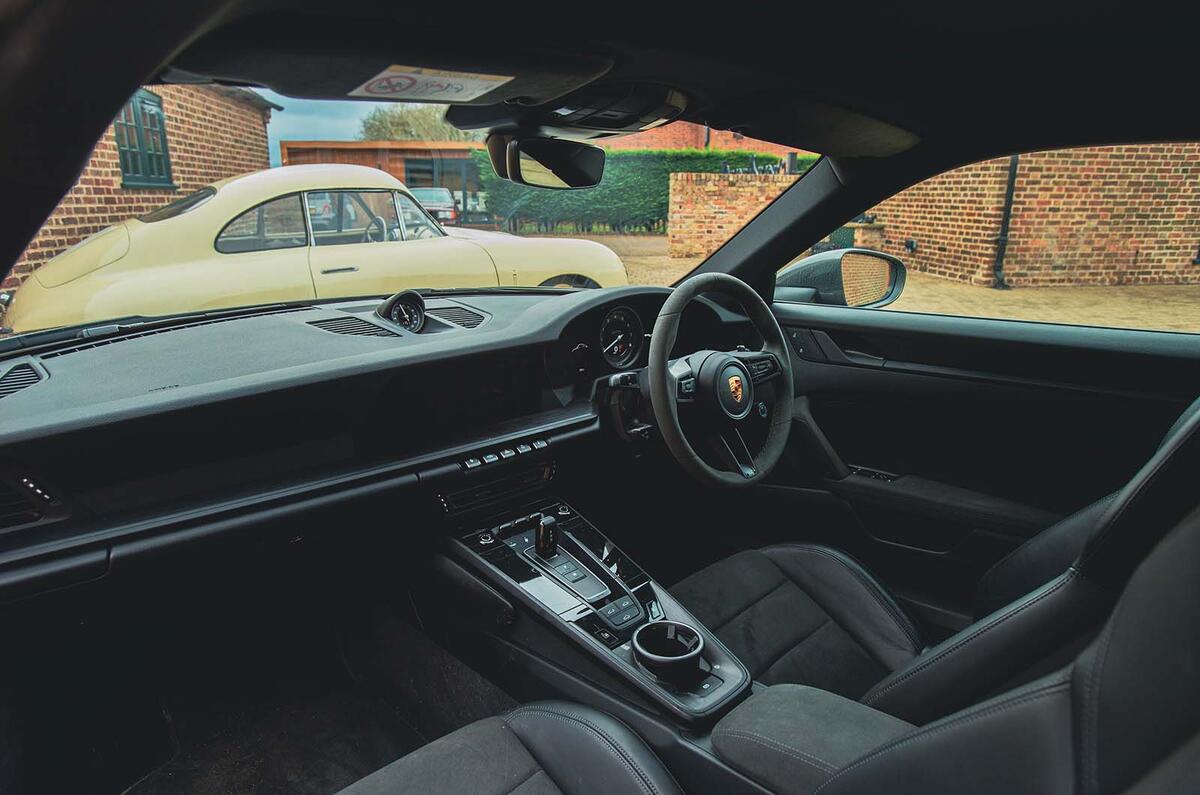
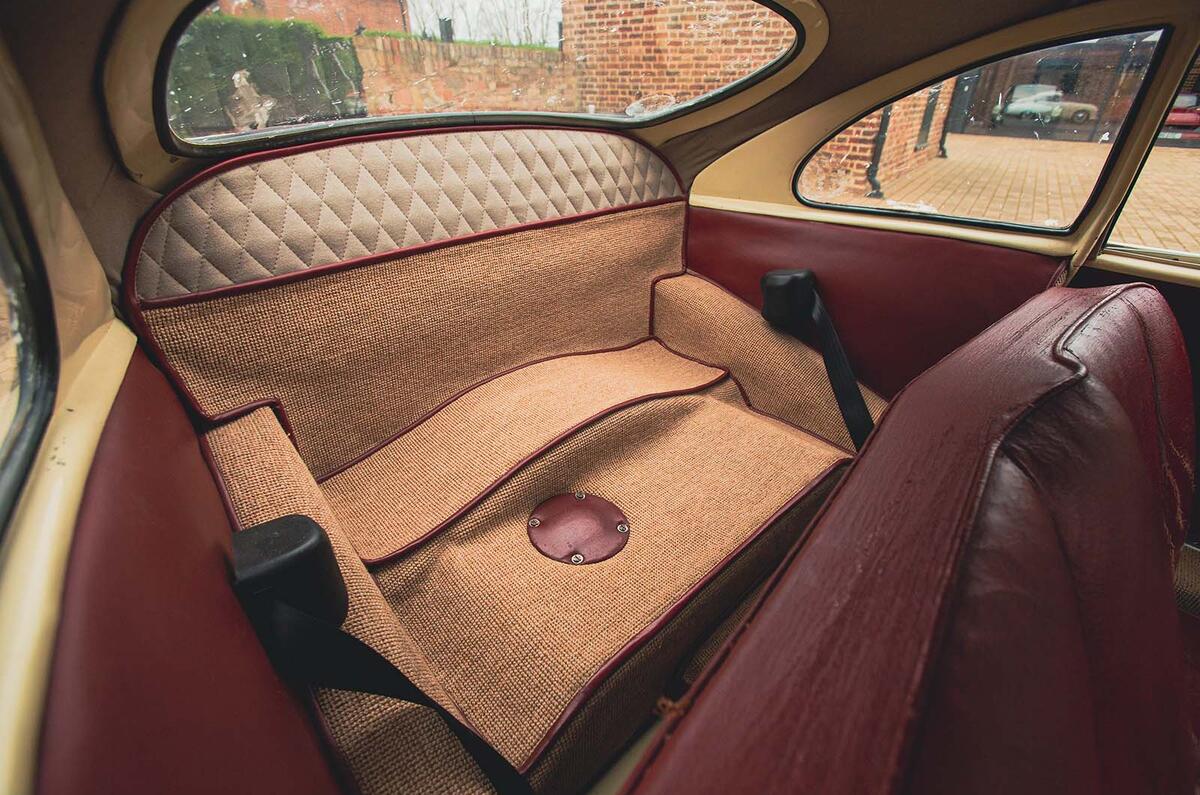
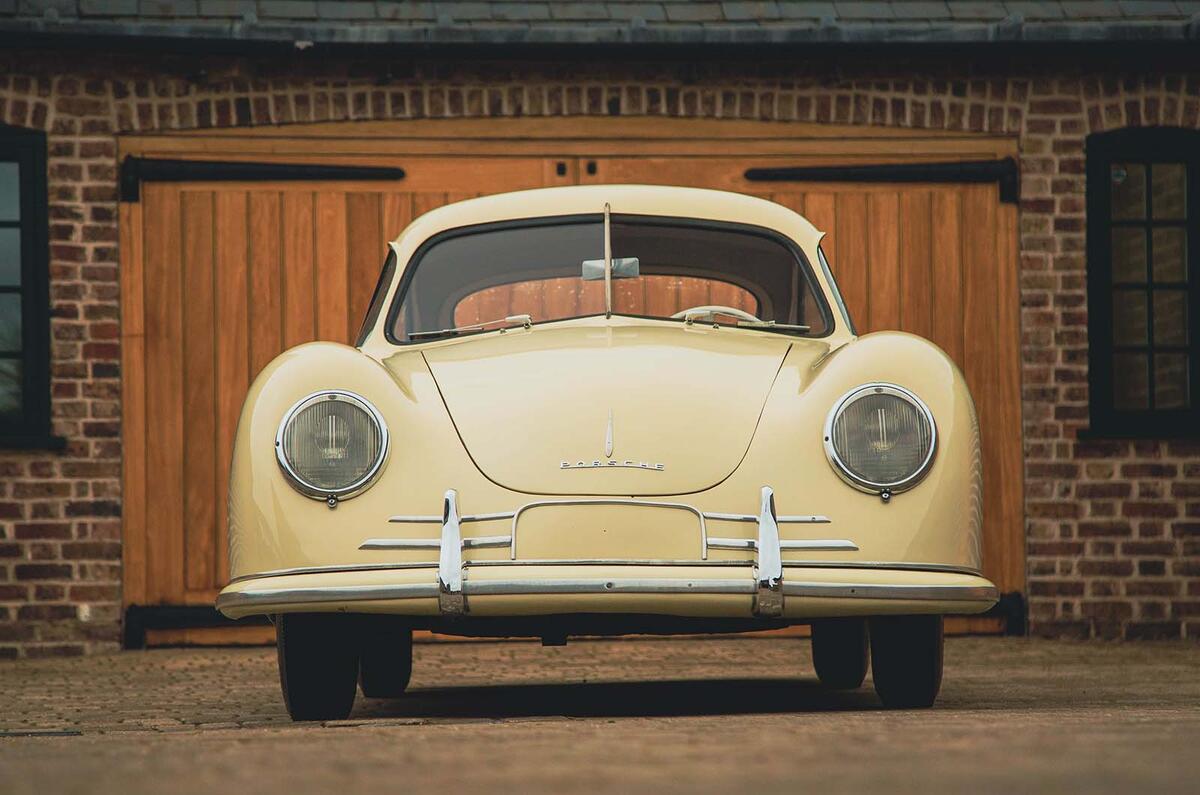
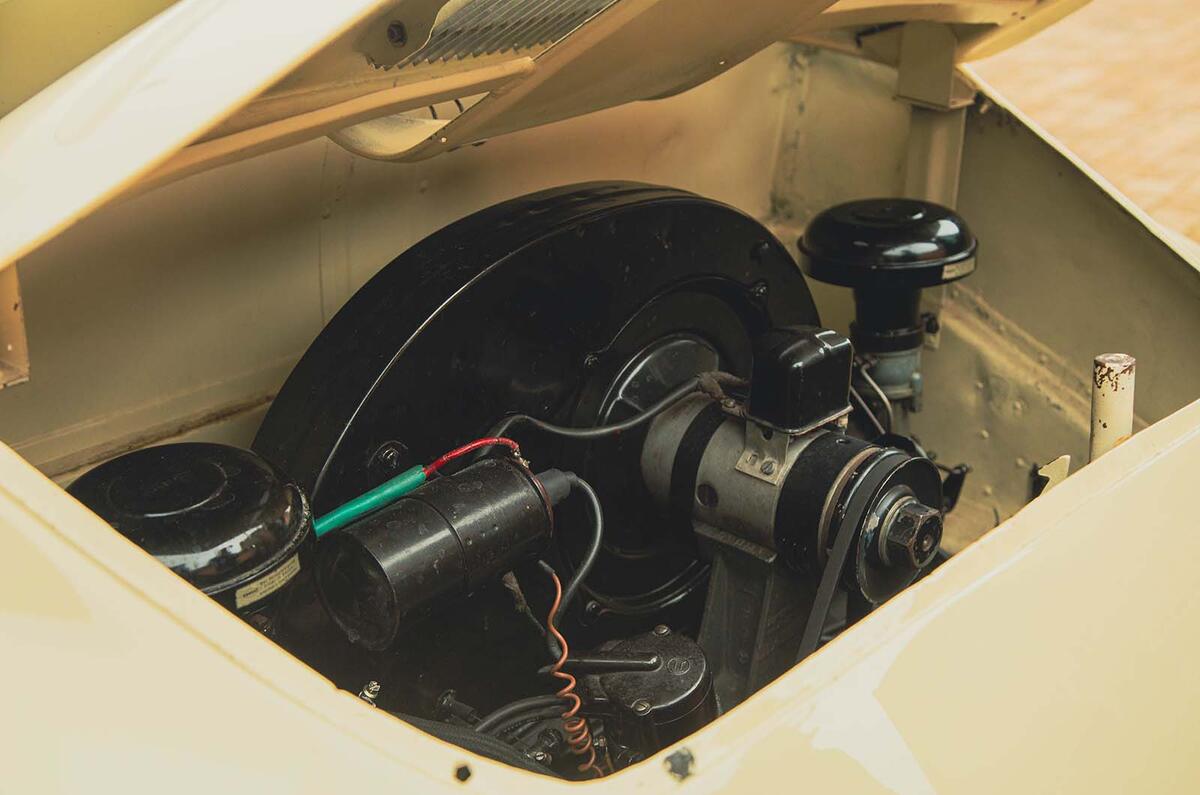
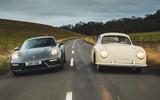
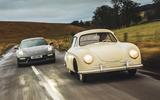
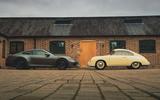
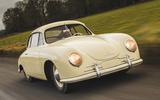


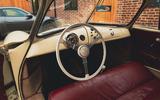

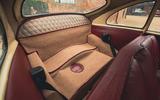
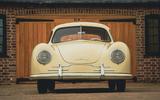
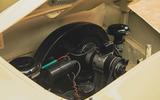





Join the debate
Add your comment
I wonder why the 356 has such narrow front and rear tracks.
Is this a legacy of its Beetle origins, or was there some aerodynamic benefit?
Either way, it just looks so wrong and must hinder the car's ride and handling.
I feel the current 911 is just too big in size. I had a 993 which was perfect, easy to park , easy to place on the road. Decent front boot space as well. Maybe we need to go back to the future.
I wish that we could buy something as simple, light, efficient and practical today - but I notice that a Dacia Spring also has 45 horsepower and a kerb weight less that one tonne!
We really have lost our way with the current breed of oversize, overweight and overcomplicated (not to mention overpriced) cars...
Completely agree, the best cars are the small light ones in my opinion, obviously added mandatory safety gear costs weight, but city and superminis are the best of the lot as far as I'm concerned, shame they're getting phased out for x-over/SUV's.
As far as sports cars are concerned, the Alpine A110 and MX5 are probably the smallest and lightest, Porsche's are now pretty much huge heavyweights by comparison.
I get what Matt says about not looking exotic, but to me, the 356 does just that, I love them, it looks every bit of the exotic classic sports car that it is, to me anyway.